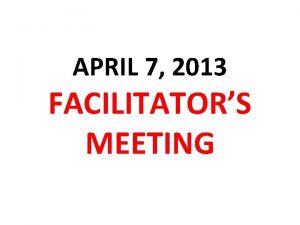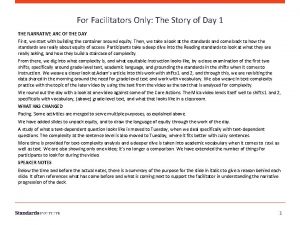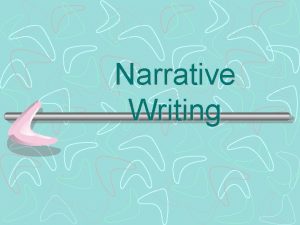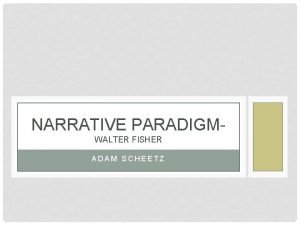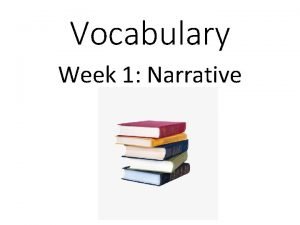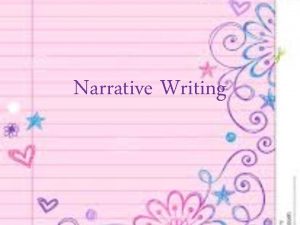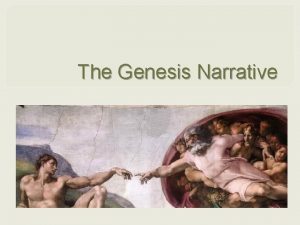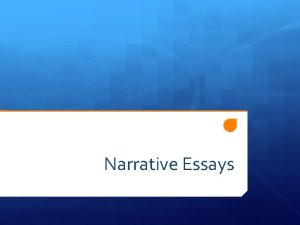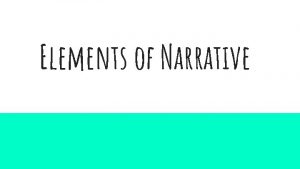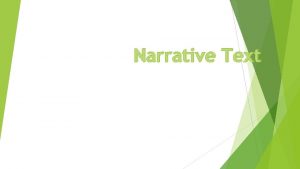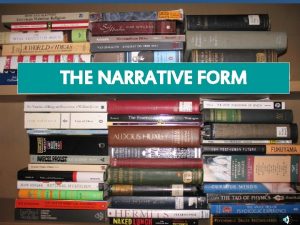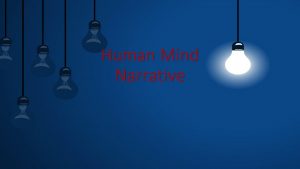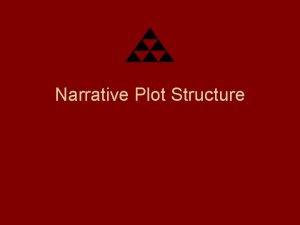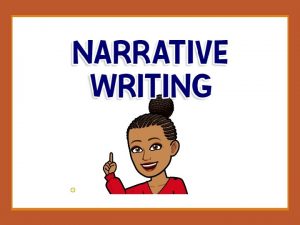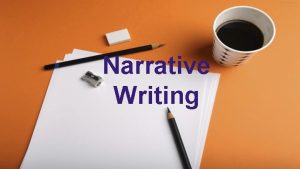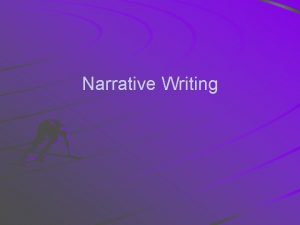For Facilitators Only Narrative of the Day NARRATIVE



















































- Slides: 51

For Facilitators Only: Narrative of the Day NARRATIVE ARC OF THE DAY Today is about helping students access complex text through close reading and examination of meaning and language, specifically, couched in principles of equity and language. Participants begin with a debrief of the keynote, followed by further work with equity, through an introduction to the principles of equity and language. Participants consider how they balance academic and conversational language in their classrooms, then take another look at the video from the previous day to examine and discuss how the teacher achieves this balance. From here participants shift to the language of text and assessing the complexity of the language through an analysis of the text students will be working with today. They learn some background about syntax to demonstrate its importance, and tackle juicy sentences as a way for students to work toward comprehension while also building language and fluency. From there, participants transfer to text dependent questions, with a focus on developing scaffolding questions to support central questions WHAT HAS CHANGED student profiles: this is no longer about specific students, but about our interaction with students around the principles of equity Juicy sentences come first before TDQs More background in Juicy Sentences Stronger focus on scaffolding for TDQs Additional video view (from previous day) if possible to demonstrate academic language and scaffolding questions 1

Close Reading and Complex Text ELA I Grades 4– 5 Day 2

We know from experience the hard work teachers face every day as they strive to help their students meet the challenges set by higher standards. We are a diverse team of current and former classroom teachers, curriculum writers, school leaders, and education experts who have worked in the public, private, and nonprofit sectors. We are dedicated to empowering teachers by providing free, high-quality, standards-aligned resources for the classroom, the opportunity for unbiased and immersive training through our Institutes, and the option of support through our website offerings. 3

Our Approach Our learning is grounded in the intersection of the standards, content, aligned curriculum, and the equitable instructional practices that are essential for closing the opportunity gap caused by systemic bias and racism. 4

FEEDBACK Processing Feedback Plus Delta 5

WHERE ARE WE? The Week at a Glance Day 1: The Foundation ● ● Equity is the standards and shifts. What can it look like in instruction? Day 2: Close Reading and Complex Text ● ● The text that we put in front of students shows them what we think about them. How do we make sure all students can access complex text? Day 3: Building Knowledge with a Volume of Reading: Selecting and Scaffolding Text ● ● Knowledge begets knowledge. How is building knowledge an equity move? Day 4: Attending to Language, Craft, and Structure ● ● Unpacking the structure of text What is the connection between being able to unpack the complex structure of a text and equitable reading and writing outcomes? Day 5: Bringing It Together with a Focus on Equity ● ● Writing our story. How do we ensure equitable outcomes for all our students? 6

DAY 2 Objectives and Agenda Participants will: • Develop a shared understanding of the intersection of equity, language, and learners. • Assess text complexity and scaffold instruction to support student access to complex text. • Apply the Juicy Sentence protocol to scaffold student understanding of text. • Develop scaffolding questions aligned to the standards. • Infuse equity into instructional moves and decision making. I. Setting Up the Day II. Equity and Language III. Assessing Text Complexity IV. Lunch V. Working with Juicy Sentences VI. Scaffolding TDQs VII. Reflection on Equity VIII. Closure 7

BUILDING THE CONTAINER Norms That Support Our Learning • Take responsibility for yourself as a learner. • Honor time frames (start, end, and activity). • Be an active and hands-on learner. • Use technology to enhance learning. • Strive for equity of voice. • Contribute to a learning environment in which it is “safe to not know. ” • Identify and reframe deficit thinking and speaking. 8

Inspired by Jennifer Abrams Where You Might Be During the Week • Moments of Validation • Moments of Reminding • Moments of New Information Notice where you are at any given time, and support yourself and others by: Asking Questions Taking Notes Stretching Yourself 9

DEBRIEF Keynote Reflection Take five minutes to reflect in your journal on one or more of the following prompts: • OPTION A: What are three salient points or ideas that you want to remember from the keynote, and why? • OPTION B: List three questions that this keynote bubbles up about equity, teaching, and learning that are immediately relevant to your work. • OPTION C: How did the keynote link to the learning from yesterday, and how does the keynote provide a specific lens through which you read objectives for today? 10

BUILDING THE CONTAINER Unpacking Equity exists when the biases derived from dominant cultural norms and values no longer predict or influence how one fares in society. Equity systematically promotes fair and impartial access to rights and opportunities. Equity may look like adding supports and scaffolds that result in fair access to opportunities, or creating opportunities for all voices to be heard. Educational Equity ensures that all children—regardless of circumstances— are receiving high-quality, grade-level, and standards-aligned instruction with access to high-quality materials and resources. We become change agents for educational equity when we acknowledge that we are part of an educational system that holds policies and practices that are inherently racist and that we have participated in this system. We now commit to ensuring that all students, regardless of how we think they come to us, leave us having grown against grade-level standards and confident in their value and abilities. 11

EXAMINE BIAS AND ITS ROLE IN OUR WORK AND LEARNING English Is Complicated • We experience the world through our culture, language, and values. • English is always changing. • American English has many variants, with rules of grammar, pronunciation, and usage. • Access to and proficiency with multiple variants of English is a strength. • Access to and proficiency with multiple languages is a strength. 5 minutes: Find a partner from another table in your section and discuss: • • How do these statements represent a change in perspective? How do these statements create a need for change of classroom practice? 12

EXAMINE BIAS AND ITS ROLE IN OUR WORK AND LEARNING Developing Our Profiles 13

EXAMINE BIAS AND ITS ROLE IN OUR WORK AND LEARNING Principles for Language, Equity, and Learners • We are the gatekeepers of academic language in the classroom. We must provide students with well-structured, intentional opportunities for collaboration that amplifies academic language. • We experience the world through our culture, language, and values. We must be intentionally inclusive of students whose culture, language, and value system may be unfamiliar or different from our own. This includes holding space for academic English, while also making the classroom a safe space for students to use variants of English and languages other than English. • Academic English proficiency is critical for all students. We must model academic language, provide instruction using grade-level complex text, and ensure opportunities for students to practice academic language in an academic context. 14

Sticht, T. G. (1972) Comprehension A Note About Reading Aloud Age 15

TEXT COMPLEXITY One Bite at a Time: Close Reading 16

TEXT COMPLEXITY Where to Focus Instruction and Support Layers of meaning Purpose Concept complexity Meaning Language Vocabulary Sentence length Sentence structure Figurative language Regional/archaic dialects Structure Text features Genre Organization Knowledge Background Prior curriculum and instruction 17

ACTIVITY Text-Complexity Factors Birth of the Haudenosaunee By Dehowӓhda×dih - Bradley Powless, Eel Clan, Onondaga Nation Journey of the Peacemaker 1. Read the text independently for gist. 2. Reread the text, and annotate the factors that make this text complex for 4 th graders. Text features Genre Organization Layers of meaning Purpose Concept complexity Meaning Structure Language Knowledge (Lexile 900 -1000) Vocabulary Sentence length Sentence structure Figurative language Regional/archaic dialects Background Prior curriculum and instruction 18

ACTIVITY Assess Text Complexity 19

TEXT COMPLEXITY Calibration and Consensus Very Extremely If the complexity isn’t there, then it doesn’t have a place in classroom instruction. Moderately Slightly 20

REFLECTION Morning Takeaways What am I not squared away on? Three Central Takeaways My Profile and Equity 21

BREAK TIME! LUNCH 22

WHERE ARE WE? Objectives and Agenda Participants will: • Develop a shared understanding of the intersection of equity, language, and learners. • Assess text complexity and scaffold instruction to support student access to complex text. • Apply the Juicy Sentence protocol to scaffold student understanding of text. • Develop scaffolding questions aligned to the standards. • Infuse equity into instructional moves and decision making. I. Setting Up the Day II. Equity and Language III. Assessing Text Complexity IV. Lunch V. Working with Juicy Sentences VI. Scaffolding TDQs VII. Reflection on Equity VIII. Closure 23

REFLECTION Comprehension and Complexity How does fluency impact reading comprehension? • Fluent reading is reading accurately at a rate that sounds conversational. • Fluent reading does not ensure comprehension. • Lack of fluent reading ensures lack of comprehension. • Does this mean we give them simpler text? 24

COMMIT TO ADAPTIVE CHANGE WITHIN THE SHIFTS The Importance of Access to Complex Text Abe had to work and did not get to go to school very often. But he loved to read books and would read whenever he got the chance. Math was also a favorite subject for Abe. Lincoln had less than a year of schooling. Books were scarce and so was paper. He worked his arithmetic problems/ on a board/ problems on a board and cleaned the board with a knife/ so he with a knife so he could use it again. 25

“Syntax” – 1818 Dictionary Definition The Importance of Syntax Read the definition of syntax provided on the handout. Paraphrase the definition at your table, and be ready to share out: • A paraphrased definition. • Why understanding syntax is important as educators. • How attending to syntax can address the Principles of Equity we have established today. 26

JUICY SENTENCES Juicy Sentences: What Are They? Sentences: • Within a complex text that are critical to understanding of the text. • That may have unusual or confusing syntax. • That are worth unpacking as a class. • That can serve as a teachable moment supported by Language and Reading standards. • That model strong writing for students to emulate. 27

JUICY SENTENCES How Do We Select Them? Four considerations: • Sentence Meaning: How important is this sentence to overall understanding of the text? • Sentence Language: Is there important academic vocabulary or language in the sentence? • Sentence Structure: What is important about the structure of the sentence in terms of alignment to a Language standard? • Sentence Writing: How can this link directly to the kinds of writing my students are working on? 28

JUICY SENTENCES What Is the Process? The sentence is read aloud. AMPLIFY Language Students rewrite or paraphrase the sentence. Teacher checks paraphrasing with the class. Students write what the sentence means. Teacher checks students’ understanding of meaning. Students write what they notice about the sentence. ATTEND to the language of the standards Teacher provides direct instruction on specific grammar or language. Students write a new sentence using the structure. Teacher reviews sentences for evidence of understanding. 29

JUICY SENTENCES Working with Examples As you watch, note: • How this process allows various entry points for students across a continuum of reading and writing proficiency. • How this process addresses the Language standards. • How this process adheres to the Principles of Language, Equity, and Learners. 30

JUICY SENTENCES Let’s Try One! Over a thousand years ago on the shores of Onondaga Lake, in present-day central New York, democracy was born. ● What about this sentence’s meaning makes it a good sentence to deconstruct using a Juicy Sentence protocol? ● What kind of structure in the text would you want to identify in a mini-lesson for students to practice? 31

JUICY SENTENCES Examples A long time ago on the shores of Onondaga lake in present day new york a democracy came into play. A government where everyone is free was created in central New York. [REMINDER ABOUT PROPER NOUNS IN DISCUSSION OF NEW YORK and ONONDAGA LAKE] There are three commas and names of locations—Central New York, Onondaga lake. [LESSON ON CLAUSES] Many miles away From the sun in the solar system of the Kari, two dwarf planets crashed together forming a huge meteorite sent hurtling to mars. 32

JUICY SENTENCES Comparing the Structures Over a thousand years ago on the shores of Onondaga Lake, in present-day central New York, democracy was born. Many miles away From the sun in the solar system of the Kari, two dwarf planets crashed together forming a huge meteorite sent hurtling to mars 1. Where did the student succeed and fail in copying this sentence structure? 2. If this represented a trend in student answers, what elements of grammar might you have to revisit in a minilesson? 33

REFLECTION Equity and Language Teachers: How can I apply the Juicy Sentence protocol to enhance reading comprehension and support student language, fluency, and writing? Instructional Leaders: Have I seen this in action? Which teachers do I know who would try this immediately? Which coaches would be most receptive to this practice? Partners: What schools and districts that I work with would benefit from this information? How could I get it to them? ● Equity may look like adding supports and scaffolds that result in fair access to opportunities, or creating opportunities for all voices to be heard. ● Academic English proficiency is critical for all students. We must model academic language, provide instruction using grade-level complex text, and ensure opportunities for students to practice academic language in an academic context. 34

COMMIT TO ADAPTIVE CHANGE WITHIN THE SHIFT In Service of Comprehending Grade-level Text Traditional Goal: Students leave the lesson knowing the details of the narrative. State Standards Goal: Students leave the lesson having read, analyzed, and understood what they have READ. 35

ATTEND TO THE LANGUAGE OF THE STANDARDS RL. 4: What’s the Difference in Alignment? • A simile is a comparison using “like” or “as. ” Identify the similes in this excerpt from Love that Dog. • What comparison does the author make in this excerpt? How does it help us understand the character? • Who is described as Herculean in this excerpt? Why? • What word do we see in “Herculean”? What does this tell us about the character? 36

ATTEND TO THE LANGUAGE OF THE STANDARDS What’s the Difference In Rigor? • Draw a plot diagram for Eagle • What do we learn about • State theme. • What theme may be emerging Song, by Joseph Bruchac, identifying the exposition, rising action, climax, falling action, and resolution. • What are Danny’s character traits? Danny’s character through the key episode in Chapter 3 of Eagle Song, by Joseph Bruchac? from the characters’ interaction in these chapters? • What language does the author use to show us, instead of tell us, this change? • What conflict does Danny struggle with in this chapter? 37

COMMIT TO ADAPTIVE CHANGE WITHIN THE SHIFTS The Shifts 1. Regular practice with complex text and its academic language. 2. Reading, writing, and speaking grounded in evidence from the text, both literary and informational. 3. Intentionally building knowledge through content-rich nonfiction. • • Draw a plot diagram for Eagle Song, by Joseph Bruchac, identifying the exposition, rising action, climax, falling action, and resolution. State theme. • What do we learn about Danny’s character through the key episode in Chapter 3 of Eagle Song, by Joseph Bruchac? • What theme may be emerging from the characters’ interaction in these chapters? • What language does the author use to show us, instead of tell us, this change? 39

The Shifts and Close, Analytic Reading You’ve adopted the curriculum. You’re using the complex texts. You’re following the pacing guide. Your students are still struggling. You don’t want to read everything out loud and explain it. What do you do? THEY DON’T GET IT TOO IT’S FOR D HAR EM TH Break the cycle N’T DO Y E TH CARE THE Y ARE N ’ T ENG AGE D T N’ E R E Y A G TH RK E TH OIN WO D ME HO 39

TDQs AND SCAFFOLDING Complexity Analysis to Find Needs QUESTION: How does the Peacemaker’s vision look today in the Haudenosaunee Nation? What information do students need to have in order to answer this question? Who the Peacemaker was What the Peacemaker’s vision for unity was What “vision” means in this context What the Haudenosaunee Nation looks like today The elements of governance in the Haudenosaunee Nation today that connect to the ideas the Peacemaker had - A context for the time between “long ago” and “today” - How do we turn this information into questions students can answer using evidence from the text? Text features Genre Organization Layers of meaning Purpose Concept complexity Vocabulary Sentence length Sentence structure Figurative language Regional/archaic dialects Meaning Structure Language Knowledge Background Prior curriculum and instruction 40

BREAK Back in 15 Minutes 41

SCAFFOLDING A Closer Look Scaffolding IS: Generative (useful in a range of lessons or contexts). An amplification of accessibility (creating an on-ramp into the work so the student can engage and benefit). A means to develop learner autonomy (to apprentice the student, over time, to support her/himself). Support that allows students to accomplish more than they could independently. Planned and/or in the moment. 42

SCAFFOLDING Developing a Sequence of Text-based Scaffolded Questions CENTRAL QUESTION: How does the Peacemaker’s vision look today in the Haudenosaunee Nation? ● With your table, craft three or four text-based questions that scaffold students for success in answering this question— without giving away the answer. ● Post these questions on chart paper beneath the central question. ● Select a member from the table to share out. 43

ADOPT ALIGNED CURRICULUM Recounting the Process: One in a Series of Many Scaffold Question Scaffold Scaffold Scaffold Question Scaffold Scaffold Question Question Scaffold Scaffold Question Scaffold Question 44

Feedback on the Process • This activity included Moments of Validation because. . . • This activity included Moments of Reminding when. . . • This activity included Moments of New Information such as. . . Traditional goal: Students leave the lesson knowing the details of the narrative. State standards goal: students leave the lesson having read, analyzed, and understood what they have READ. 45

ADOPT ALIGNED CURRICULUM Choices ? ? ? Adapt and Scaffold Aligned Curriculum Create, Teach with Scaffolds to Grade Level Create and Teach to Grade Level 46

EXAMINE BIAS AND ITS ROLE IN OUR WORK AND LEARNING Now That I Know Better, I Do Better. What about your thinking has changed since you filled out your Equity Profile this morning? What questions do you still have? What new questions do you have? 47

REFLECTION Have We Met Our Objectives? Day 2 – Close Reading and Complex Text: The text that we put in front of students shows them what we think about them. Are we now better prepared to: • Collaborate on a shared understanding around the intersection of equity, language, and students? • Assess text complexity and scaffold instruction to support student access to complex text? • Apply the Juicy Sentence protocol to scaffold student understanding of text? • Develop scaffolding questions aligned to the standards? • Infuse equity into instructional moves and decision making? 48

CONTINUOUS IMPROVEMENT Feedback • Please fill out the survey located here: www. standardsinstitutes. org • Click “Summer 2018” at the top of the page. • Click “Details” in the center of the page. 49

About this deck • Copyright © 2018 Unbound. Ed Learning, Inc. • This work is licensed under a Creative Commons Attribution Non. Commerical Share. Alike 4. 0 International License. • Unbound. Ed Learning, Inc. is the copyright holder of the images and content, except where otherwise indicated in the slide notes. • More information on Creative Commons’ licenses can be found here: https: //creativecommons. org/licenses/ 50

How you can use this deck The materials that we create, unless otherwise cited in the slide notes, are licensed under the Creative Commons Attribution-Non. Commercial-Share. Alike 4. 0 International license (CC BYNC-SA 4. 0). This means you may: • • Share — copy and redistribute the material in any medium or format • Provide Attribution — You must give appropriate credit, provide a link to the license, and indicate if changes were made. You may do so in any reasonable manner, but not in any way that suggests that Unbound. Ed or any third party creator endorses you or your use. • • No Commercial Use — You may not use the material for commercial purposes • Add no additional restrictions — You may not apply legal terms or technological Adapt — remix, transform, and build upon the material As long as you follow the license terms: Share. Alike — If you remix, transform, or build upon the material, you must distribute your contributions under the same license as the original. measures that legally restrict others from doing anything the license permits. 51
 Day 1 day 2 day 3 day 4
Day 1 day 2 day 3 day 4 Promotion structure
Promotion structure External facilitators advertising
External facilitators advertising Virginia mathematics pathways initiative
Virginia mathematics pathways initiative Day 1 day 2 day 817
Day 1 day 2 day 817 Take only photographs leave only footprints
Take only photographs leave only footprints Only that day dawns to which we are awake
Only that day dawns to which we are awake Just for today i will try to live through this day only
Just for today i will try to live through this day only Humanitr
Humanitr Matte större än tecken
Matte större än tecken Delegerande ledarskap
Delegerande ledarskap Toppslätskivling dos
Toppslätskivling dos Borra hål för knoppar
Borra hål för knoppar Redogör för vad psykologi är
Redogör för vad psykologi är Bris för vuxna
Bris för vuxna En lathund för arbete med kontinuitetshantering
En lathund för arbete med kontinuitetshantering Mat för idrottare
Mat för idrottare Geometri för barn
Geometri för barn Etik och ledarskap etisk kod för chefer
Etik och ledarskap etisk kod för chefer Publik sektor
Publik sektor Datorkunskap för nybörjare
Datorkunskap för nybörjare Fredsgudinna pax
Fredsgudinna pax Steg för steg rita
Steg för steg rita Ministerstyre för och nackdelar
Ministerstyre för och nackdelar Nationell inriktning för artificiell intelligens
Nationell inriktning för artificiell intelligens Claes martinsson
Claes martinsson Sju principer för tillitsbaserad styrning
Sju principer för tillitsbaserad styrning Bat mitza
Bat mitza Roliga rim till lärare
Roliga rim till lärare Nyckelkompetenser för livslångt lärande
Nyckelkompetenser för livslångt lärande Mästar lärling modellen
Mästar lärling modellen Personlig tidbok för yrkesförare
Personlig tidbok för yrkesförare Orubbliga rättigheter
Orubbliga rättigheter Matematisk modellering eksempel
Matematisk modellering eksempel Shaktismen
Shaktismen Bamse för de yngsta
Bamse för de yngsta Särskild löneskatt för pensionskostnader
Särskild löneskatt för pensionskostnader Verktyg för automatisering av utbetalningar
Verktyg för automatisering av utbetalningar Kolposkopi px
Kolposkopi px I gullregnens månad
I gullregnens månad Ro i rom pax
Ro i rom pax Boverket ka
Boverket ka Strategi för svensk viltförvaltning
Strategi för svensk viltförvaltning Informationskartläggning
Informationskartläggning Tack för att ni har lyssnat
Tack för att ni har lyssnat Ekologiskt fotavtryck
Ekologiskt fotavtryck Cks
Cks Läkarutlåtande för livränta
Läkarutlåtande för livränta Påbyggnader för flakfordon
Påbyggnader för flakfordon Inköpsprocessen steg för steg
Inköpsprocessen steg för steg Sura för anatom
Sura för anatom Egg för emanuel
Egg för emanuel























































